|
BULB LOG 24 --- 13th June 2007
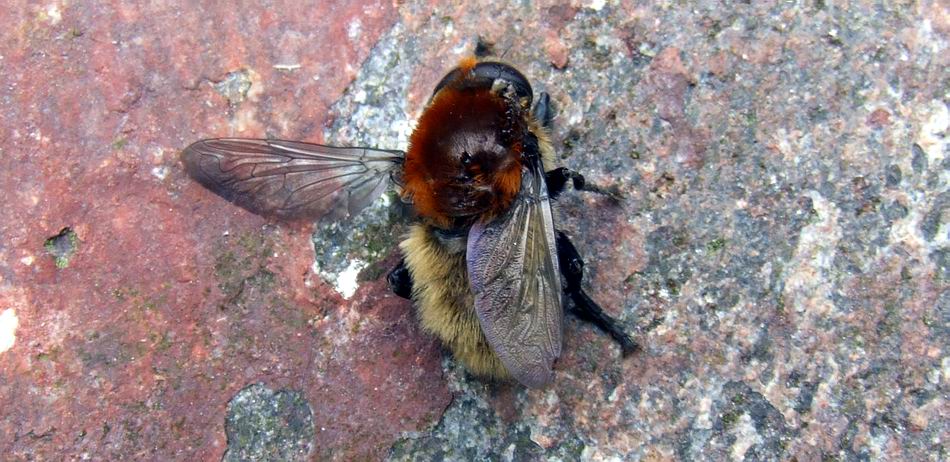
Narcissus fly
Bad news: this is the first sighting of a Narcissus fly we have had in our garden. I am not saying they have not been around before but I have never spotted any and considering how easily other people seem to see them I suspect that they are not that common with us. The flies lay their eggs on Amaryllids, especially Narcissus and Galanthus and the grubs make their way into the bulb and eat out the centre. I hope that this is just a stray fly blown north and not the start of another pest that we have to suffer in our garden - fortunately most of the narcissus and galanthus are dormant now with the exception of Narcissus bulbicodium.
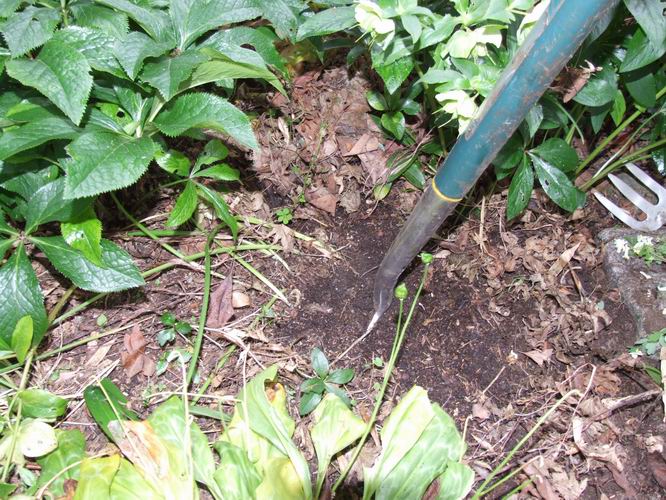
Lifting bulbs
I am only just in time to lift and split some garden bulbs like this clump of Leucojum. I could split them any time through the summer while they are dormant but I like to use the remains of the leaves to find them and these are now just still visible. I could have marked the clumps out with marker sticks but I never get around to doing that - my gardening is full of good intentions.
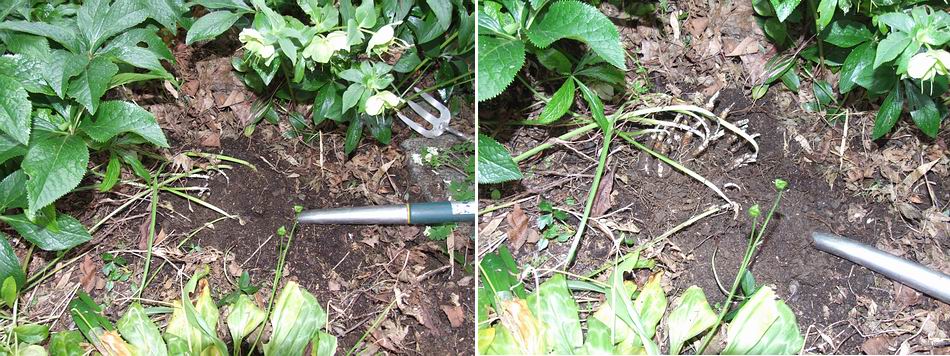
Lifting bulbs to split
Taking care to stick my garden fork as far as it will go down to the side of the clump, so that I do not spear any bulbs, I then push the handle back until it is flat to the ground then I shake it up and down which works the bulbs out of the ground enough for me to see them and lift them onto a tray to sort out.
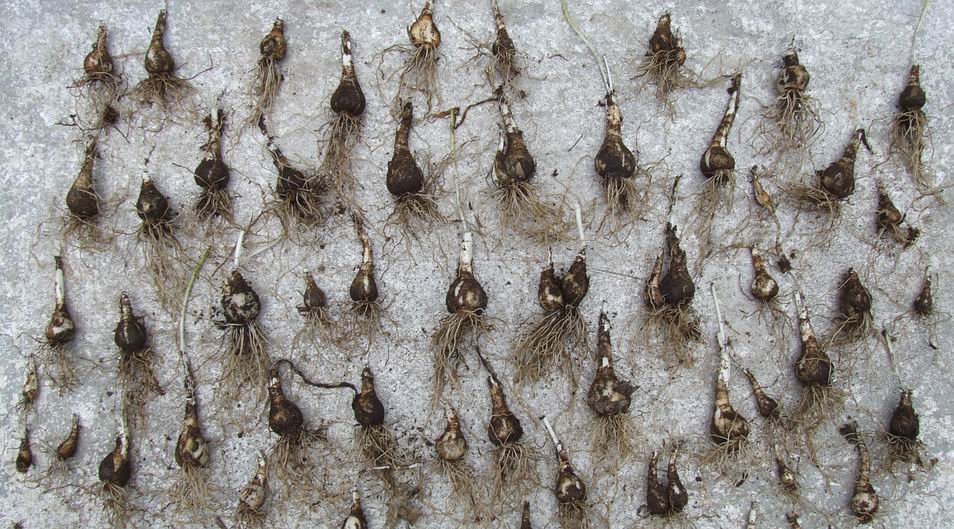
Bulbs split out
When you see them singled out it is amazing how many bulbs you can get from a single clump.
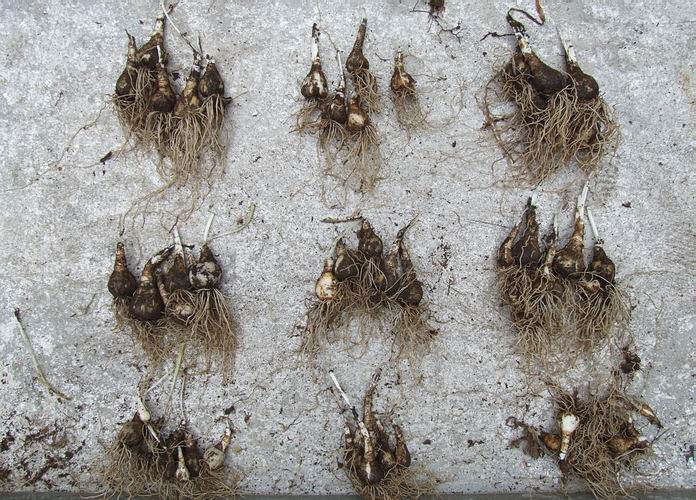
Groups of bulbs
I then make several groups of around 5 bulbs to replant. One goes into the original site and the others can be spread around if I can find space.
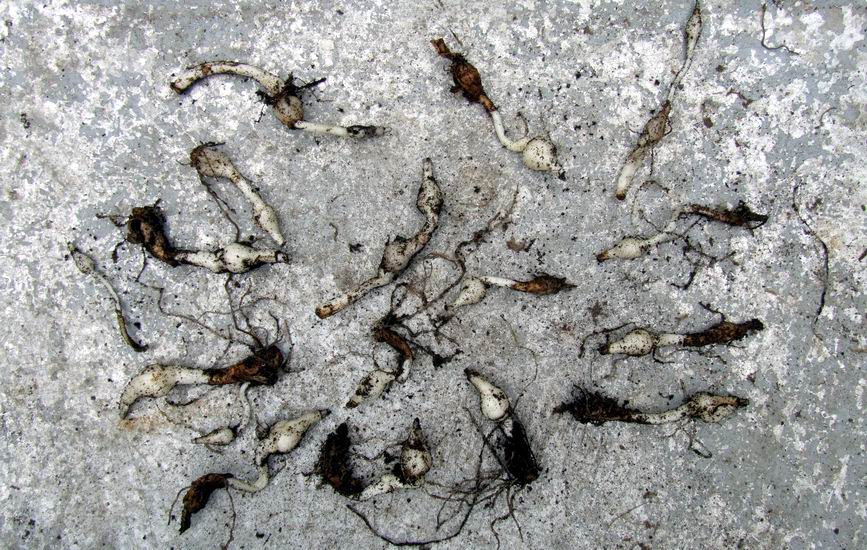
Stolon bulbs
I had intended to split these leucojums last year but did not get round to it - now the clump is so congested that some bulbs have made short stolons in an attempt to get away from the overcrowding. If you do not split clumps of bulbs on a regular basis they get more and more congested and then the flowering will diminish and the bulbs will get smaller and smaller. The reason for the decline is that the increased competition for food and moisture becomes too intense for any of the bulbs to perform well. I think this is one of the main reasons that we do not see many clump forming bulbs in wild populations - they would not survive for any length of time and as a result of natural selection they are bred out.
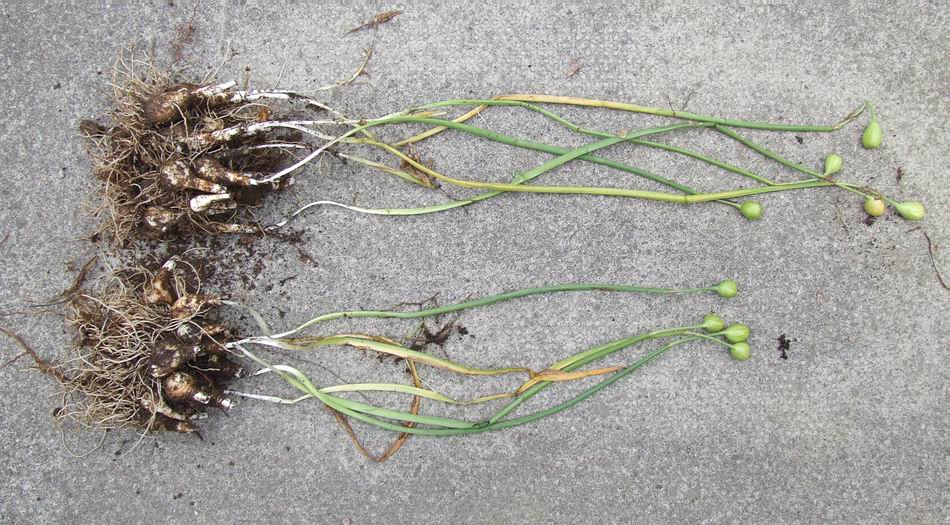
Leucojum vernum bulbs and seed pods
I have a number of forms of Leucojum vernum and despite their willingness to increase by division I also like to raise them from seed to see what variations might appear. These are two forms and if you look at the length of the flower stem and the seed pods you can see a difference.
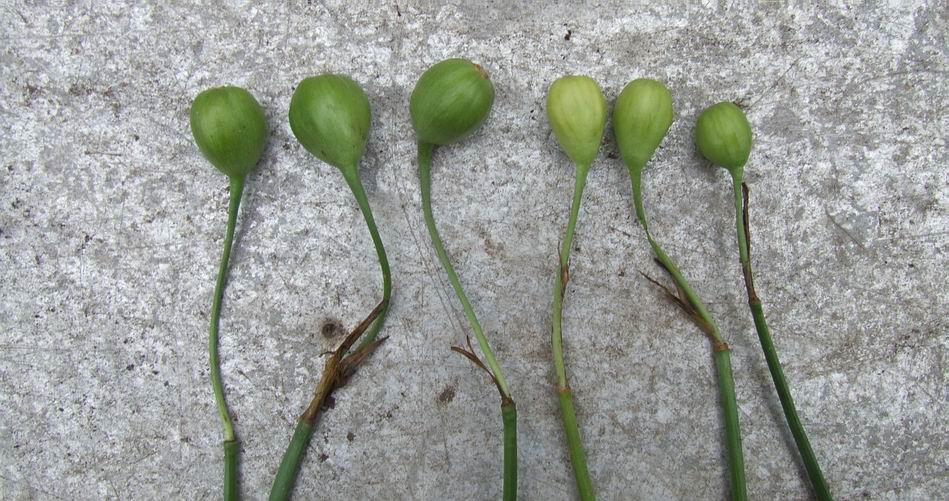
Leucojum vernum seed pods
A close up view of the seed pods shows clearly the different shapes.
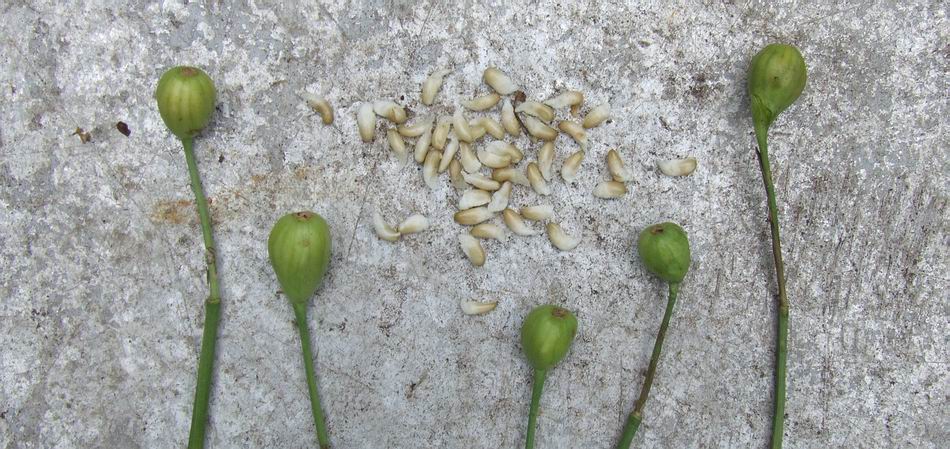
Leucojum vernum seeds
It does not matter that the pods are still green as the seed is fully formed and ripe for sowing now. I will not store this seed but will sow it immediately and leave the pot in an open frame. Because they have that fleshy appendage, an eliasome, they would be distributed by ants and so I will sow them deep - at least half way down the pot.
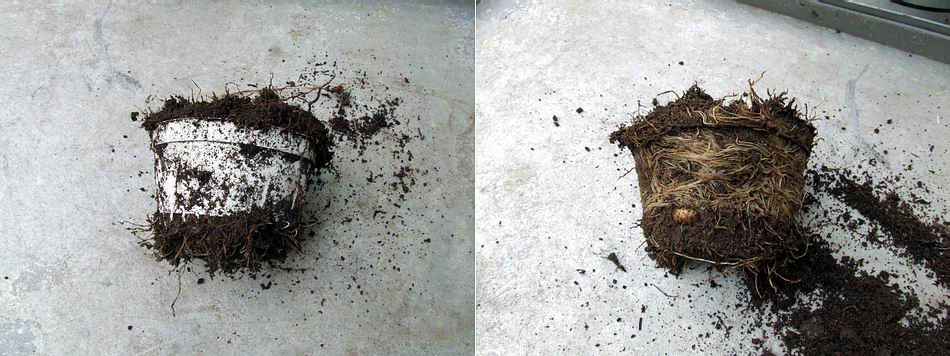
Galanthus in plunge basket
Many of the smaller bulbs that we grow in the garden beds are planted in these lattice pots. This makes it very easy to lift the bulbs with out the risk of damaging them with the fork. The idea is that the bulbs are contained by the plastic pot but the roots can get out through the lattice bottom section into the garden soil - as you can see this has not exactly worked to plan as the roots have wound around the solid section of the pot.
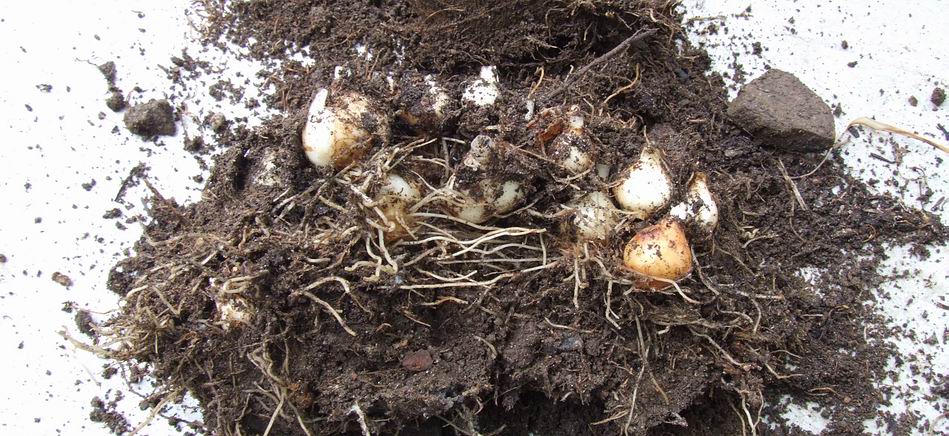
Over crowded bulbs
The main reason for this is that I have not repotted them for several years and the bulbs have become overcrowded and worked themselves upwards forming three layers.
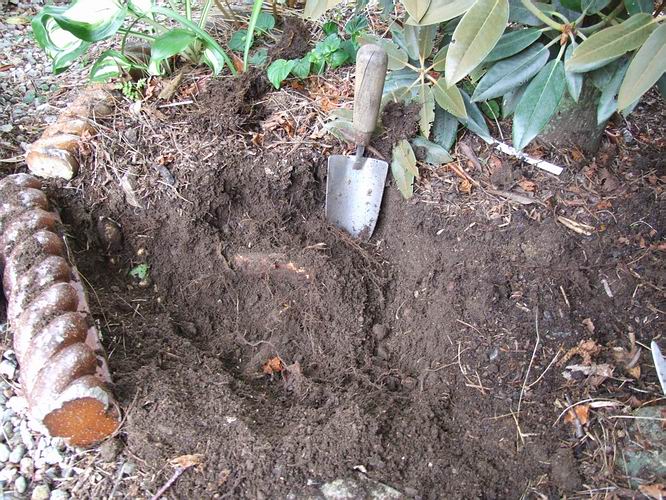
Dig hole
As I have just removed an old hosta I have the space to enlarge the planting hole - notice the tree roots there are lots of them in our garden as we have lots of trees. Bulbs do not mind being planted among tree roots; in fact it can be advantageous in our climate where we often have wet summers as the trees use up the water leaving the bulbs to enjoy a dry summers rest.
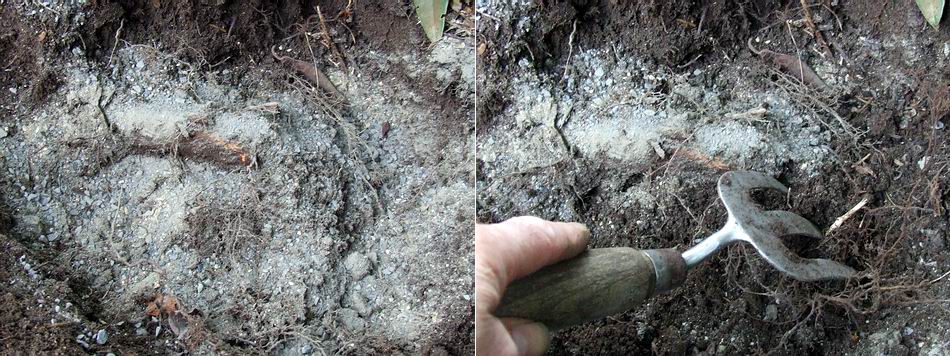
Bone meal and rock dust
I sprinkle some bone meal and rock dust (more on rock dust next week) at the bottom of the hole working it in with a small hand fork.
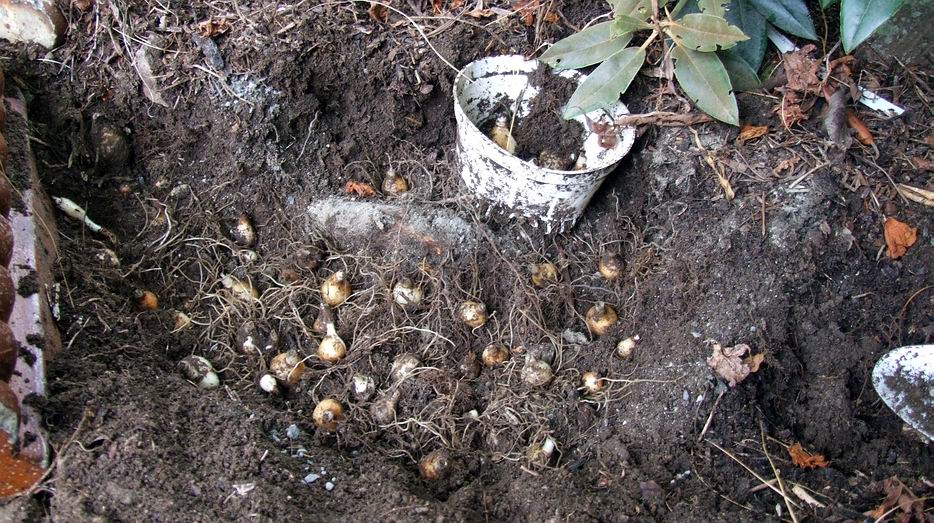
Replanting galanthus
I placed some bulbs back into the mesh basket then I spaced out the other bulbs before back filling the hole - I can now look forward to a nice display of snowdrops having split them at the ideal time.
So often we are advised to move our snowdrops in the green - that is when they are in full growth. I do not hold with this, it is never the best situation to move a bulb when it is in root as any damage will reduce its ability to build up the reserves it needs for next years growth.
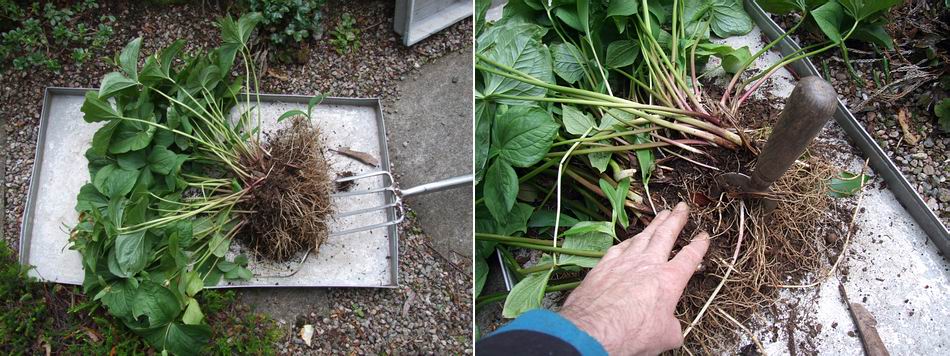
Splitting trilliums
There are always some exceptions because I like to split my trilliums now just as the flowers have gone past - in the green. Unlike snowdrops a Trillium is not a true bulb and it has a different growth pattern. The flower bud for next year forms at the end of the rhizome and very soon the roots that will support next years growth will start to emerge. By moving the plant now all I am likely to damage is this years roots and the leaf growth both of which have served their purpose already. The new roots that will emerge through the summer and autumn will be able to grow undamaged so that they can do their job efficiently and sustain next springs growth. See bulb log 17, 2007 and log 23, 2006, when I last split some trilliums.
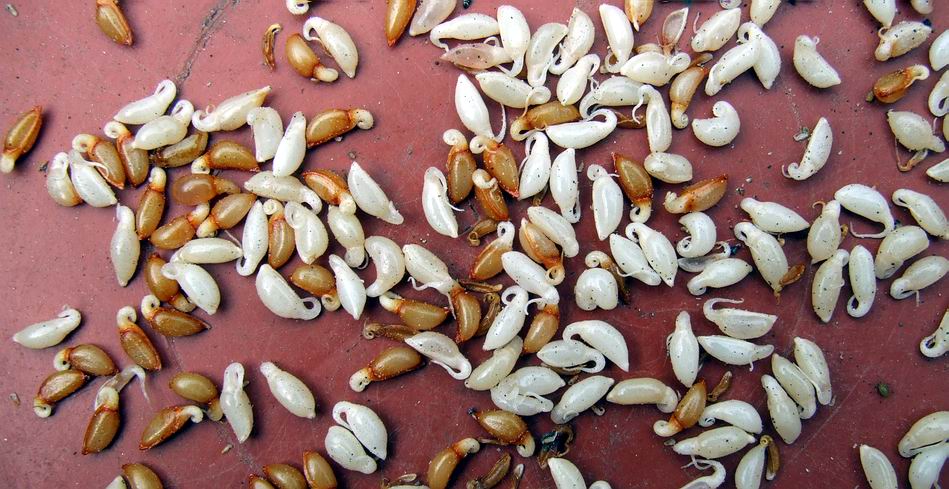
Erythronium dens canis seeds
The very distinctive seeds of Erythronium dens canis show clearly that they also have an eliasome - in this case it is always curled over like a shepherds crook at the end. All the Erythronium dens canis conglomerate including E.caucasica, siberica and japonica have this feature which is shared with the Eastern Erythronium species of North America such as E. albidum and americanum. This is just some of the evidence that tells us that these groups are more closely related to each other than they are to the Western North American species which do not have eliasomes.
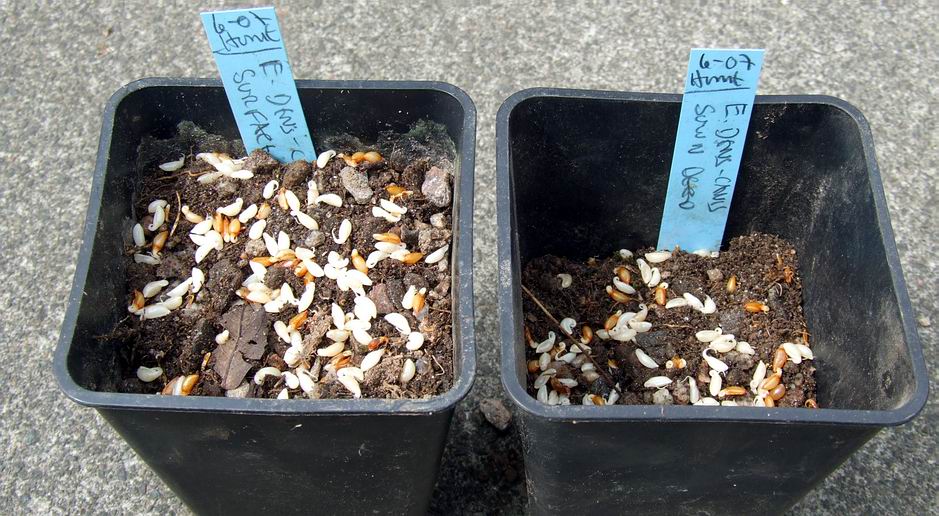
Sowing Erythronium dens canis seeds
As part of my ongoing experiments I am sowing half of the seeds on the surface in one pot and the other half at depth and I will record the results. I predict that the best result will be from the ones sown deep.
^ back to the top ^
|

